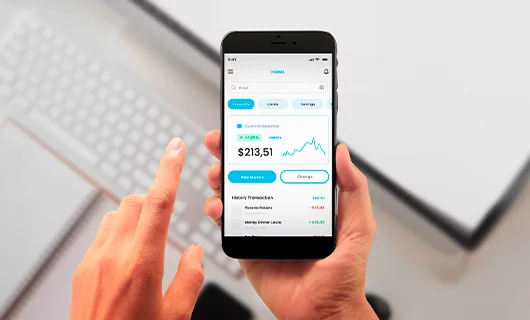The ESG strategy relies heavily on a change in the approach to resource management that allows for careful and responsible sustainability. One of the beneficial changes will be the introduction of FinOps principles into your company’s software development. How can FinOps as a strategy improve following ESG principles besides the apparent reduction of computing power costs? Check the case in the following article.
Introduction
The term FinOps combines the words “Finance” and “Operations,” indicating a close connection between the business departments and software development teams. FinOps is a practice that incorporates various company departments into taking responsibility for the cloud’s variable spending model. In this approach, IT, finance, product, and other departments influence cloud usage spending and resource-saving opportunities equally.
The FinOps approach forces the various corporate departments to work together in a coordinated way to deliver an efficient product, control finances evenly, and plan future activities in a balanced way. When everyone involved understands what resources are needed to execute a project, it becomes easier to work together to optimize the delivery, quality, and expense.
FinOps and cloud sustainability share a similar approach to responsible and conscious use of technology. By implementing FinOps principles in your organization, you simultaneously reinforce the responsible use of cloud resources and minimize the negative environmental impact of the tech sector. This is extremely important because unless we make significant changes in our approach to technology development, as much as 14% of the global carbon emission in 2040 will result from the growth of the ICT sector.
The Role of FinOps in Sustainable Software Development
As mentioned above, reinforcing FinOps principles strengthens cloud services optimization. Check out examples of how a FinOps initiative can realistically translate into sustainable software development in your organization.
Optimized Resource and Waste Management
FinOps in software development allows the introduction of green programming. This approach aims to design and produce software that makes sensible use of resources at every stage, from conception to termination of the product. FinOps and green programming result in a holistic approach to software engineering, which maximizes not only the reasonable use of resources at the moment but also minimizes the waste of executing redundant lines of code in the future.
Cost Visibility and Accountability
The cloud FinOps approach manifests the maturity of the company and its managers. Above all, the change of attitude to shared responsibility for cloud costs forces a revolution in previous spending and investment planning. Financial management is no longer chaotic and controlled by only a few people. Instead, product design and manufacturing costs are made public, and all departments involved in FinOps can suggest changes in specific areas. A new long-term strategy for cost optimization is being created and is subject to continuous improvement.

Integrating FinOps Practices into the Software Development Lifecycle (SDLC)
The FinOps approach consists of 6 main principles. These are:
- Collaborative teams.
- Driving decisions by cloud business value.
- Shared ownership for the cloud usage.
- Real-time access to FinOps data.
- Centralized team driving FinOps.
- Opportunities of the variable cost model of the cloud.
Their origin comes from software engineering rules, so it seems natural to be guided by them at each step of the software development lifecycle. Check out how to incorporate the FinOps principles into each step, from software design to its deployment and maintenance, to achieve the best possible results consistent with ESG and sustainability.
Embedding FinOps Principles into the SDLC Stages
Teamwork is an approach well-known to engineering teams, which must be joined by other departments responsible for cloud use. Combining technical and business forces allows you to understand each other’s work and drive each other to achieve even better results. Producing the product together makes it easier to understand the shared responsibility for cloud usage and strive for better utilization.
Although everyone works as a team, all decisions are coordinated by a central FinOps team, which relies on real-time results and forecasts and communicates with management. This allows the various departments responsible for the project to focus directly on their workloads.
It has been known for a long time that product architecture is influenced by business value. A high return on investment (ROI) is the key to creating a software product. In the FinOps framework approach, the factor of the cloud’s business value is added. It’s a catalyst for innovation around which crucial cost decisions can be made.
How to Encourage People to Follow the FinOps and ESG Principles
On paper, anything is possible. However, in practice, the introduction of governance changes such as FinOps is often met with opposition from employees to management. How can you align software development with FinOps and ESG goals? Everyone agrees that ESG is extremely important, but according to Accenture, only 49% of CIOs are part of the team setting sustainability goals. Complete integrity of technology strategy with ESG claims only 7% of businesses. The intersection of sustainability with FinOps is also low, so we must strive to see noticeable growth shortly.
It is a good idea to start the changes by introducing new rules in company policy, such as the use of cloud, scalability limits, or waste management rules. These will leverage the most resistant teams and individuals to follow sustainable principles. It is crucial to actively involve stakeholders, who should be regularly notified of progress. Transparency of the message will encourage them to check sustainability indicators.
An essential part of operating according to the FinOps framework is investing in training. Unfamiliar things always seem difficult. Proper familiarization allows you to move on to applying new practices with knowledge and the energy to use them. Training, the hiring of specialists, and the eventual upgrade of infrastructure is an investment that will not only benefit the environment but also your company.
Conclusion
Integrating FinOps practices into software development offers a multifaceted approach to enhancing ESG outcomes. By optimizing software engineering and cloud costs, organizations can simultaneously drive environmental, social, and governance objectives. The future outlook for those embracing this integrated approach appears promising as they stand to achieve greater efficiency, transparency, and alignment with sustainability goals.
It’s crucial to recognize the significance of continuous improvement and adaptation in this journey. Only through this way we can truly advance toward responsible and greener software development, ensuring a positive impact on both business and society.
Suppose you’re focused on achieving better results through FinOps-oriented software development. At Scalo, we have the necessary know-how to create an environmentally friendly and business-optimized software product for you. Set up a meeting with us today to tell us about your idea, and we’ll present you with a detailed FinOps approach with best practices and show you how we’ll fit into your ESG strategy.





